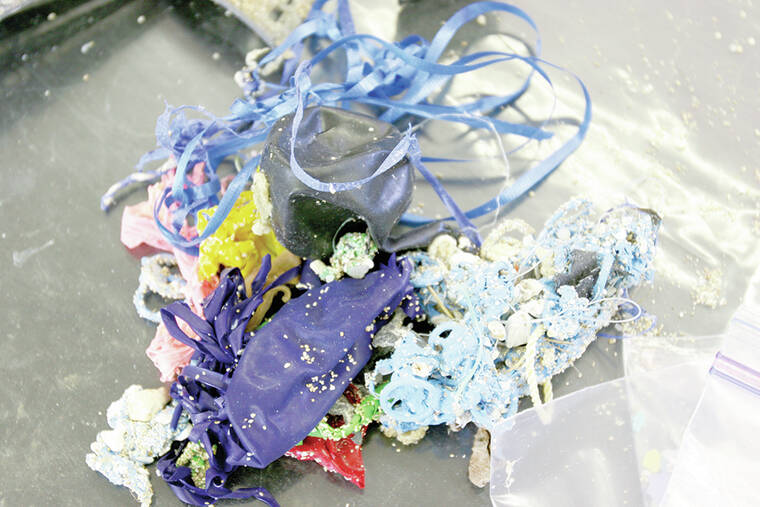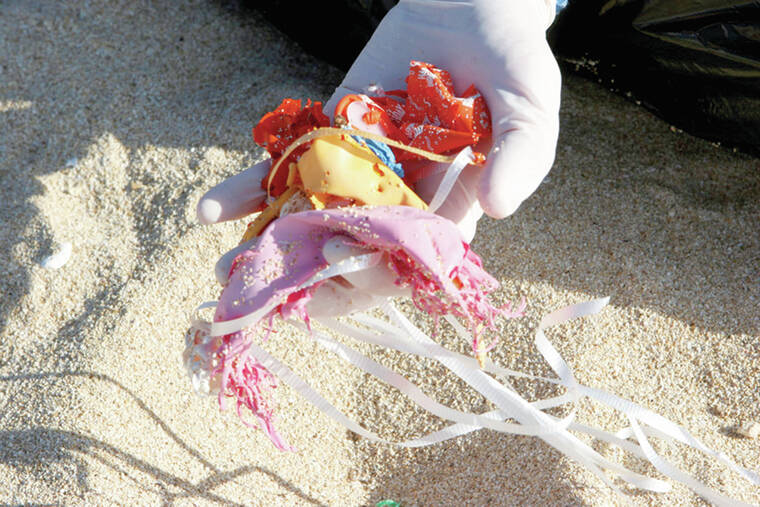LIHU‘E — In an effort to protect marine life, the state has banned the intentional outdoor release of balloons.
Hawai‘i now holds the strictest restrictions on balloon releases in the United States, and one of the strictest in the world. The ban took effect Jan. 1.
“We’re leading the way, and I hope many other places follow Hawai‘i on this,” said Suzanne Frazer, co-founder and president of Beach Environmental Awareness Campaign Hawai‘i. “We should be very proud that Hawai‘i is taking this stance on protecting our precious marine birds and animals.”
The law — which was approved by the state Legislation and signed into law by then-Gov. David Ige on June 30, 2021 and went into effect Sunday — states that anyone caught intentionally releasing, organizing or causing the release of balloons will be fined $500 per offense. Exemptions exist for hot air balloons, balloons released indoors that remain indoors, and balloons released by the government for scientific or meteorological purposes.
“It doesn’t include a young child letting go of a balloon by mistake, because that’s not intentional,” Frazer said. “But we’ve seen a big increase every year of balloons on beaches at graduation time, in May and June,” Frazer said. “And we’ve had some of our volunteers actually witness people letting go of balloons on purpose at graduation. That is intentional, and that is covered (in the law).”
Balloons released into high altitudes undergo a process known as “brittle fracture,” popping and fragmenting into long strands. When these fragments fall into the ocean, sea turtles and seabirds often mistake the strands for jellyfish or squid. According to one study, 78 percent of rubber ingested by sea turtles were balloon fragments.
When ingested, the balloons become gooey and impossible for animals to pass through their digestive system, blocking their gastrointestinal tracts. As a result, the animals often starve to death.
“It’s probably a very painful death — it’s not a quick death,” Frazer said. “If you can imagine, it’s like chewing gum when you get it stuck on the bottom of your shoe and you can’t get it off. That’s kind of like what having a balloon in your digestive tract is like.”
A 2019 study found that balloon fragments were the known or probable cause of death in more than 18 percent of balloon-ingesting seabirds. The study also found seabirds were 32 times more likely to die from ingesting balloon fragments than from ingesting hard plastic fragments.
As an alternative to releasing balloons, Frazer recommends planting a garden or tree to remember or appreciate a special moment.
“If you’re commemorating something or celebrating something, then you’ll always have that beautiful garden or that tree, and you can go back and tend and care for it,” she said. “It’s a lovely way to give back to celebrate or commemorate at the same time.”
•••
Jackson Healy, reporter, can be reached at 808-245-0427 or jhealy@thegardenisland.com.



